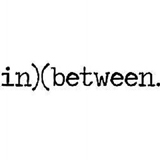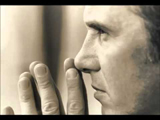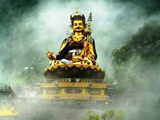Integral Health
To live without dying
While sceptics and rationalists would vouchsafe for a doomsday to be the penultimate destiny of the earth and therefore of humanity (unless it emigrates somewhere else in space), the classical Indian view is that creation has been manifesting and dissolving in a scheme of eternal recurrence. A particular creation can dissolve when it has exhausted all its potentialities of development and would need to start anew with a fresh denouement to explore newer vistas. A creation can also dissolve if it embarks on a course of self-destruction ticking the doomsday clock.
Any creation is therefore ‘in between’ creations of the past and creations of the future. Instead of conceiving the present creation as the grand experiential finale, Indian and Tibetan seers have always considered it to be a state in between renewable states, a moment that is in between recurrent moments and therefore eternal in recurrence, temporal amidst the timeless, spatial in the sea of infinitudes.
As with creation, individual life is not the end of all dreams and possibilities, but an ‘in between’ state in a renewable trajectory. Sri Aurobindo explains that as the object of embodied life “is to seek infinite experience on a finite basis, and since the form, the basis by its very organisation limits the possibility of experience, this can only be done by dissolving it and seeking new forms (1).” “And this is the law of Death (2)”
What is then important is not the dissolution but renewal of forms. What is eternal is not the persistence of the same form but constant renewal of forms. Life has to be perceived, enjoyed and lived not only during life-spans but also, albeit in a different integer, in the form of memory-traces in the intervals ‘in-between’ renewals. In fact, this is the raison d’ etre of the phenomenon of death.
The ‘in between’
Life that exists ‘in between’ birth and death is constantly renewed in the existence that lies ‘in between’ reality and birth. In Tibetan mysticism, this concept of ‘in between’ (called in Tibetan as ‘bar-do’) has esoteric significance. If life is in between birth and death, the ‘death-point’ (not the point of clinical death but the point when consciousness per se gets completely de-linked from the bodily form) is between life and reality and what we perceive as reality lies in between death point and existence while existence is itself discernible between reality and birth. “All ‘moments of existence’ are ‘between’ moments, unstable, fluid and transformable into liberated enlightenment experience (3).”
The individual’s role
Has the individual any role in this grand cosmic play that runs through endless epochs? When a particular creation dissolves, the significant landmarks achieved are preserved in the memory traces of the cosmic Inconscience to act as templates for future creations. If Brāhma of the Indian trinity creates and Śiva dissolves creation, Viṣṇu the Great Preserver has to maintain the memory traces ‘in between’ creations in his timeless slumber so beautifully portrayed in his reclining poise of anantaśayana.
Likewise, when an individual departs, the significant impressions of a life-time encrypted in the soul-essence outlive the life-span and remain as memory traces in the cosmic consciousness to act as templates for future lives. In the Integral vision of Sri Aurobindo and The Mother, this soul-essence is represented by the Psychic Being that is the evolving poise of the soul and travels from birth to birth, projecting a distinct outward personality in each birth in consonance with the cultural milieu and Zeitgeist of that era. If an individual has lived a worthy life with intensely lived moments, if one has had the good fortune of receiving inspired knowledge, enjoyed unmotivated bliss, if one has cultivated lofty values, if one has been through creative forays, then the essence of all such mighty moments are preserved in the Psychic Being, carried beyond the life-span, ‘in between’ births to act as templates for future lives.
The individual has therefore a great respons-ibility, greater than earning one’s livelihood, fulfilling one’s ambitions or maintaining one’s family. The individual is responsible for creating a more beautiful and harmonious future life in future births. One need not ponder over the future but live the present life in intense inner moments that raises one to the highest superconscient experiences, widens one to the cosmic consciousness and leads to the depths of one’s inmost recesses to access the essence of the being. Indeed it would be a tragedy to die without utilising the freedom and opportunity to create a more illumined future life. In Buddhist parlance, the greater tragedy would be the resultant inability to come out of the misery of future meaningless lives.
Preparation
This means that one has to be prepared for a meaningful death. People believe that death would automatically give one rest and respite so that the soul is ready for its onward journey. But this does not happen from the occult point of view. The demise of the body does not imply that all the desires, vital longings and strong attachments of the subject get vaporised. On the contrary they remain in the ambience. The Mother explains, “When you die you lose only your body and at the same time the possibilities of relation with and action on the material world. But all that belongs to the vital world does not disappear with the material substance; all your desires, attachments, cravings persist with the sense of frustration and disappointment, and all that prevents you from finding the expected peace. To enjoy a peaceful and eventless death you must prepare for it (4).”
The great Master, Padma Sambhava, had chronicled in the eighth or ninth century the meticulous experiments carried out by Tibetan monks to prepare for a meaningful death with creative potentials for future lives. This required a charting of a road-map ‘in between’ death and rebirth, the preparation for traversing this road map by those who were still living and a step by step assistance to the departed by his fellow-monks for an onward journey crossing hurdles of the occult realms. This road-map is borne by an esoteric mandala of a hundred archetypal deities representing psychological attributes that range from those representing higher planes of consciousness to those representing ‘energy-fields’ and those presiding over disembodied, formless realms.The deities have to be invoked with inner offerings produced by one’s own self-habits of mind and body so as to procure deliverance from the straits of the ‘in between’ through transmutation of ignorance, lust, hate, pride and envy (5).
Such detailed, meticulous and exacting preparation for dying was developed in the Tibetan monastery and perfected through years and years of inner research. It is true that it would be difficult to replicate this practice in a world outside the monastery and especially in the modern era where the Time-Spirit is pressing for a synthesis of material life and spirituality. After all, the Zeitgeist has different denouements at different historical and cultural eras and we have to move forward in alignment with its nuances. The integral vision of Sri Aurobindo and the Mother provides a unique way to approach this subject of dying which, while retaining the essence of the Tibetan experience, is more dynamically suited for the modern age.
Throughout the ages, spiritual pursuance in the Indian tradition led a path beyond the ego to the Void or Brahman. This was an enriching experience but material life remained separate from spirituality. Sri Aurobindo preferred a replacement of the ego with a Beyond-ego integrating principle which would act as a link between material life and spirituality. The outer strands of the being could be integrated around this deeper principle named as the Psychic Being which is actually a projection of the ‘Unevolving Self’ in the manifestation. The Psychic Being serves the material life by being a more harmonious centre of the being than the ego which was skewed in its functioning. It also serves the spiritual life by integrating the myriad strands of the being, facilitating its ascent along the trajectory of Consciousness. The Psychic Being is a harbinger of unalloyed Joy and Light and is intuitive in character. It retains the deepest impressions of life to be carried beyond the lifespan. These impressions remain as memory traces in the cosmic consciousness to act as templates for future lives. If the Psychic Being is consciously cultivated, not only can we have an integrated personality ready for an illumined material life as well as spiritual embarking but we can also create our future lives.
As Vishnu lies in his cosmic trance hidden from our mortal eyes, the Psychic Being also lies in the depths of the being veiled by our personality and outer senses. It is a great psycho-spiritual pursuit to access its presence by working on oneself. Indeed, an integral initiative needs to be taken by the votaries of the new school of health and psychology to chalk out a new technology of a meaningful life that culminates in a meaningful departure.
The Mother describes, “Beyond all the emotions, in the silent and tranquil depths of our being, there is a light shining constantly, the light of the psychic consciousness. Go in search of this light, concentrate on it; it is within you. With a persevering will you are sure to find it and as soon as you enter into it, you awake to the sense of immortality. You have always lived, you will always live; you become wholly independent of your body; your conscious existence does not depend on it; and this body is only one of the transient forms through which you have manifested. Death is no longer an extinction, it is only a transition. All fear instantly vanishes and you walk through life with the calm certitude of a free man (6).”
What can be a better preparation for death, nay immortality — than to live without dying!
“Thy nature, immortality! Who knows?
And yet who knows it not? It is but life
In stronger thread of brighter colour spun,
And spun for ever…. (7) ”
Edward Young, ‘Night Thoughts’.
References
1. Sri Aurobindo. Birth Centenary Library, Volume 18. Pondicherry: Sri Aurobindo Ashram Trust; 1970, p. 193.
2. Ibid.
3. Sambhava P. The Tibetan Book of the Dead. New York: Bantam Books; 1994, p. 34
4. The Mother. Collected Works of the Mother, Volume 15. Cent. ed. Pondicherry: Sri Aurobindo Ashram Trust; 1980, p. 130.
5. Sambhava P. The Tibetan Book of the Dead, p. 34.
6. The Mother. Collected Works of the Mother, Volume 12. 2nd ed. Pondicherry: Sri Aurobindo Ashram Trust; 2002, pp. 83-4.
7. Enright DJ (ed.) The Oxford Book of Death. Oxford: Oxford University Press; 1983, p. 165.
Share with us (Comments, contributions, opinions)
When reproducing this feature, please credit NAMAH, and give the byline. Please send us cuttings.





